Dredd: How It Failed And Why It Deserved Better
Dredd is another in a long line of movies that, for one reason or another, failed to find a theatrical audience despite being fantastic.
This article is more than 2 years old
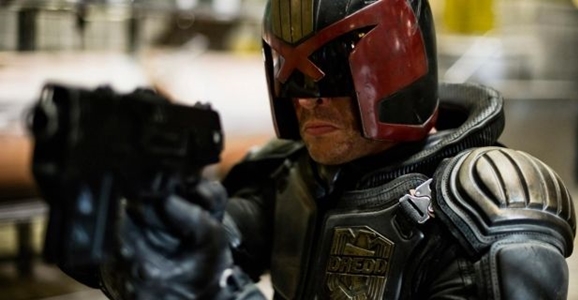
Sometimes movies don’t click with audiences when they’re initially released. It may be timing, it may be the style, maybe it lacks a big-name star to put butts in theater seats. Movies tank for any number or combination of factors, but that doesn’t mean they’re not still great. Such is the case with 2012’s Dredd.
Let us not confuse the movie we’re talking about today with the much-maligned 1995 Sylvester Stallone debacle, Judge Dredd. Based on the same source material, they are very, very different animals. (I have a weird affection and place in my heart for that film, though I will never go so far as to argue that it’s good.) In fact, that confusion, or at least association, is one reason people often cite for why the latter film fell on its face at the box office. It certainly didn’t help matters.
Dredd is another in a long line of movies that, for one reason or another, failed to find a theatrical audience despite being fantastic. Worldwide, it only took in $41 million, with a dismal $13 million domestic haul.
Why Dredd Deserved Better
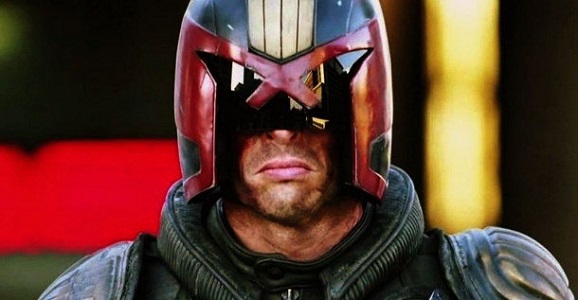
Dredd may be based on a comic—he first appeared in 1977 via long-running British comic called 2000 AD—but it’s not your typical comic book movie. This isn’t the episodic long-form superhero storytelling of Marvel, nor the darker, brooding, but still PG-13 fare DC often trades in. No, directed by Pete Travis, Dredd is violent and brutal and hard-R to the point it had to be toned down to get there.
Set in the future after a nuclear incident destroys much of the world, the remnants of humanity cram into sprawling metropolises. These become dystopian hell-holes, full of violence and depravity. The only force of order is the Judges, roving cops who serve as judge, jury, and executioner all in one, dispensing tyrannical justice. Our story takes place in Mega-City One, which accounts for much of the East Coast of the United States. There are 17,000 serious crimes reported daily, to which law enforcement responds to 6%.
The plot of Dredd is fairly simple. Legendary Judge Dredd (Karl Urban) is tasked with training and evaluating a new recruit, Judge Anderson (Olivia Thirlby), a mutant with strong psychic ability. They respond to a trio of murders in Peachtrees, a 200-story high rise slum, and have to fight their way through the building, which is controlled by a vicious drug dealer named Ma-Ma (Lena Headey). She controls the trade of a new drug called Slo-Mo, which slows down how the user experiences time to one-percent normal speed.
Dredd takes a certain amount of flack for having a similar plot to Gareth Evan’s martial arts banger The Raid. The Raid did come out first—after a festival run, Evans’ film got a theatrical release in March 2012, while Travis’ debuted in September—and they are, at least on the surface, similar. That said, and for the sake of clarity, one didn’t rip off the other. This is a case where two films with comparable plots came out near each other. Though it arrived later, due largely to significant post-production special effects work, Dredd actually filmed first.
It doesn’t really matter, in addition to being their own individual things, both movies are completely badass and should be watched, often.
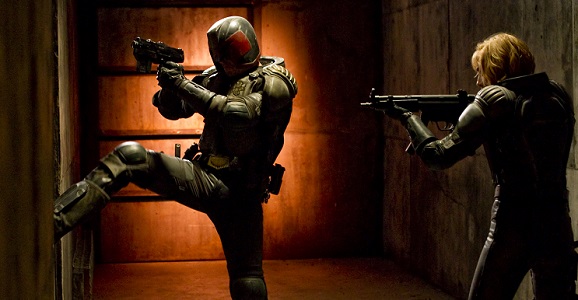
Though the setup of Dredd may be relatively straightforward, the finished product is anything but. Written by Alex Garland, who penned the likes of 28 Days Later, and who went on to direct heady sci-fi, like Ex-Machina and Annihilation, Dredd has more on its mind than just empty action. The surface machinations may be minimal, but the film as a whole is deceptively complex and nuanced.
Since his inception, Judge Dredd was always intended as a critique of the creeping fascism and totalitarian idealism that was on the rise in the political realm at the time, especially in Britain, but elsewhere as well. He’s a brutal tool of a corrupt system, draconian in the way he dispenses justice. When we first meet him, via a high-speed chase full of guns and bullets and viscera strewn across the highway, he’s a black-and-white, letter-of-the-law lawman. No matter the situation, no matter the circumstances, this is what the law says, this is what he does.
Dredd carries this stance to extremes. When he and Anderson are trapped in Peachtrees, taking fire from Ma-Ma’s gang, he still trains her, barking out orders and questions. Because that’s his job and nothing will push him off that path. He’s like a wind-up toy, blindly going in one direction, unable to deviate.
That’s where Anderson comes in. She introduces shades of gray into Dredd’s world. Her psychic abilities give her insight into people and a corresponding empathy. She’s an orphan, a mutant, a product of one of these slums. Dredd looks up and all he sees is the crime, gangs, the 96% unemployment rate; she sees a place very much like home, full of mostly good people struggling in a tough situation.
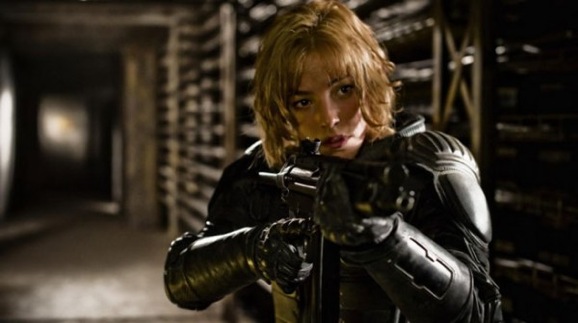
Dredd is bleakly nihilistic, a kind of futuristic Travis Bickle, while she’s earnest and idealistic. Over the course of the movie they find something of a middle ground. She realizes maybe she shouldn’t always expect the best out of people, while he realizes maybe everything isn’t as cut-and-dried as he’s always thought.
Over the course of their day Anderson commits errors that should fail a recruit, like losing her primary service weapon. But so did he. Or consider the case of a character like Domhnall Gleeson’s Techie. Yes he works for Ma-Ma, but only because he has no other choice. If he denies her, she’ll eviscerate him. In fact by this point, she’s already taken his eyes. Anderson sees that, whereas Dredd can’t, or at least couldn’t before.
Within the larger thematic puzzle, Urban and Thirlby—both actors who should be in way more stuff—carry all of this. When the film was announced, Karl Urban delighted fans ahead of time when he said one of his conditions for accepting the role was that, like in the comics, the character never take off his trademark helmet. Even though we can only see the lower third of Dredd’s face, he manages to portray much more than just clamp-jawed stoicism and a grim demeanor.
Urban has such a great range. He’s charming and funny as Bones in the new Star Trek movies. Here he’s in total big-time action-movie mode, which he more than pulls off. Even with what could easily be a one-note throwaway role like Skurge in Thor: Ragnarok, he gives the character pathos and an arc.
Thirlby’s Anderson could easily have fallen into first-day-on-patrol cop-movie clichés. She’s earnest, but not gullible; hopeful, but not to the point of naivete; frightened, but still strong and capable. Willing to resort to violence—when Dredd declares a criminal guilty and sentences him to die on the spot, she pulls the trigger—it’s not her natural first move. Her character balances and tempers Dredd’s impulses, influencing him. It builds to the point when his superior asks if Anderson passed, he says yes, even though, by the book, she committed fail-able sins.
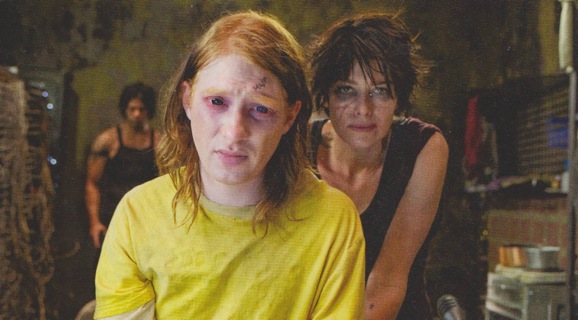
Lena Headey may be the unsung all-star of Dredd, though. She’s straight-up terrifying. A former prostitute wearing a gnarly face scar, she rules through absolute fear. This is a person not afraid to skin enemies alive and dose them with Slo-Mo before tossing them off the top floor, so the 200-story fall takes that much longer. Ma-Ma is equally as terrifying and relentless as Headey’s Cersei Lannister in Game of Thrones, but played in a much different way.
Working with cinematographer Anthony Dodd Mantle (127 Hours), Travis created a fantastic looking movie. The Mega-City One of Dredd has a palpable grime, like if you touched it, your fingertips would come back covered in grit and something sticky you’d rather not know the origin of. But it also has a hypnotic beauty. We never really see the Cursed Earth beyond the walls of the city, but wide helicopter shots show the expanse of decayed urban sprawl. It’s dirty and smelly and looks a little like a large-scale Die Antwoord video.
It’s the Slo-Mo shots, however, that set Dredd apart aesthetically. This isn’t typical slow motion, just the normal action slowed down, this is molasses compared to that. When a character takes a hit, the subsequent movement practically drips. Travis and Mantle use it to great effect. They use enhanced, borderline psychedelic colors, bullets rip through flesh practically frame by frame, spurts of blood and exploding heads are raw and visceral in a unique way, but also gorgeous and mesmerizing. This is gore elevated to art.
All of this still comes through on home video, but Dredd hit theaters in 3D. 2012 was the middle of that boom where every big movie of this ilk was upscaled to 3D, whether it was shot that way or not. It was overused and oversold, but Dredd knows what it’s doing in that regard. More than simply things flying at your face, it created an immersive feel more akin to the likes of Avatar than other comic book movies. Especially the Slo-Mo scenes. They put you right in the middle, creating an almost uncomfortable sensation of being there.
Why Dredd Failed At The Box Office
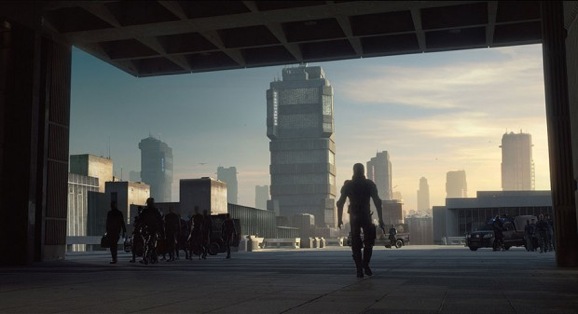
Dredd offers up a tense pot-boiler of a movie. From end to end, it’s all escalating pressure, fantastic, epic action, and brutal violence juxtaposed with raw humanity. It’s legitimately great, which begs the question, why did it fail in such spectacular fashion at the box office?
Dredd presents an interesting case for a couple of reasons. It’s not as if no one liked the movie. On Rotten Tomatoes, which collects critical reviews, it has a 79% approval rating. Critics generally liked it at the time as well as now.
Beyond theaters, it made a huge splash on home video (which was still a thing back then). It was the best-selling DVD/Blu-ray release when it hit the market, where it moved 300,000 units in its first week of release, on its way to more than 650,000.
After all this, there were multiple fan petitions that collected hundreds of thousands of signatures calling for Dredd 2. They started almost immediately after it tanked at the box office and have popped up sporadically ever since. There were even annual fan Days of Dredd for a few years to call on Hollywood to make more Dredd movies. We’ve seen comics, animated shorts, and all kinds of talk, particularly from producer Adi Shankar, who, for a time, would chat about sequels every chance he got.
For his part, star Karl Urban has often said he’s game to return to the square-jawed character. Saying this even as recently as March 2020. (Through writer Alex Garland said in October of 2019, he has no intention of ever returning to this universe.)
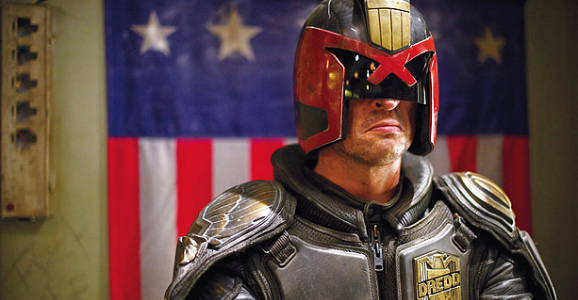
If it’s so popular, why did Dredd fail? There are a lot of potential answers to this.
One is that the stank of Stallone’s 1995 version was still on people’s minds and that kept many away. That Stallone movie isn’t good, but is it that bad?
Another theory is that Dredd was marketed as another superhero movie and was a victim of superhero fatigue. It is based on a comic book, but while Judge Dredd is popular, it’s always been more niche and less mainstream. You can slap Batman, Superman, or Spider-Man on anything and people will see it. But Judge Dredd doesn’t have the same drawing power. Also add in the hard-R rating, the violence, the blood, the fact that it is very not family-friendly, that may have had something to do with it.
Dredd also isn’t the product of a major marketing conglomerate. Disney bought Marvel in 2009 and created a monolith. DC has Warner Bros. behind their movies. This is a much smaller scale production from a bunch of smaller producers. Dredd cost a reported $50 million. Compare that to the other comic book movies in the summer of 2012: The Avengers cost $220 million, The Amazing Spider-Man cost $230, and Christopher Nolan’s The Dark Knight Rises set the studio back $250 million. Dredd isn’t in that same echelon, though people made it out that it was.
More than anything, I’m a believer that timing killed Dredd. The film opened in September 2012, which has become a bit of a barren wasteland between summer blockbusters and winter award-season bait. This was also a summer where we had movies like The Avengers, The Dark Knight Rises, Amazing Spider-Man, Men in Black 3, The Bourne Legacy, and tons more big franchise movies. It’s one of my jobs to see movies, but even I’m usually exhausted and sick of sitting in theaters by the time September rolls around. So are general audiences, who often stay away from theaters for a while at that time of year. Theatergoers may not have had another big movie in them at that particular moment.
Couple that with a lower budget, a lesser-known comic property, no significant star power to speak of, and a much smaller marketing budget, and it adds up to a missed opportunity. And I’m kind of okay with that.
Granted, I have no financial skin in the game, and I would definitely be jacked to see more Dredd movies. Still, we never had to suffer through subpar sequels, or had to hope the next one will be good. Instead, we have this one awesome movie. Dredd kicks all kinds of ass on many levels and we should be psyched we can watch it whenever we want.
Who Really Directed It?
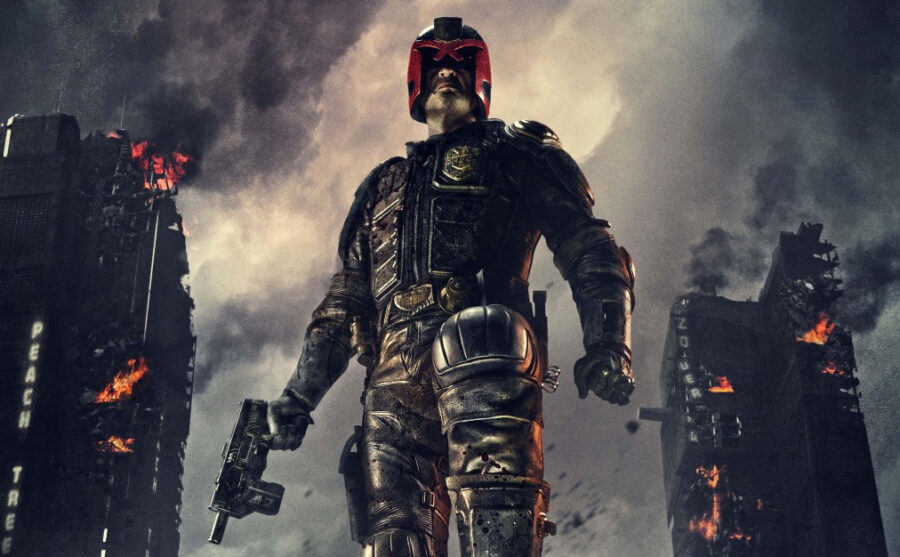
There is one additional thing to note about Dredd. Though it doesn’t necessarily impact the viewing of the film, it may change how some people view it. It’s also a curious story, one that has been floating around for some years, more or less since the initial release.
Looking at the credits, Dredd lists Pete Travis as the director and Alex Garland as the writer. The long-circulating rumor is that Garland actually directed much, if not most, of Dredd. It’s one of those inside-baseball, not-really-a-secret secrets.
And it’s not without some merit. As recently as 2018, Karl Urban said as much. In an interview with JoBlo, he said: “I would love to have the opportunity to play Dredd again, but if it doesn’t happen then I’m happy with the fact that we’ve made a film that has become a cult classic and that people have discovered over time. A huge part of the success of Dredd is in fact due to Alex Garland and what a lot of people don’t realize is that Alex Garland actually directed that movie.”
That seems pretty definitive. He later went on to say that people should count Dredd as Garland’s directorial debut. There has even been talk Travis was barred from the editing process and Garland even sough a co-director credit.
This is all conjecture and gossip, but it makes a bit of sense. Garland obviously had eyes on a directing career and made his debut two years later in 2014. It may not mesh with the look and feel of Ex-Machina and Annihilation—his only other credit is the new FX series Devs—though it does show some of his trademarks. On the other hand, it’s quite different from Travis’ filmography as well. In reality, it doesn’t really feel quite like the work of either filmmaker and it’s easy to believe it’s bit of a hybrid.
If Karl Urban and others are to be believed, Dredd is the result of Garland more than Travis. Whether or not that’s how you lean, the movie still totally rules.












